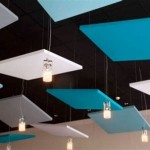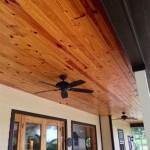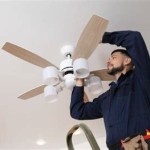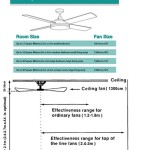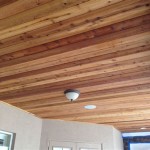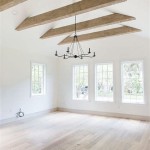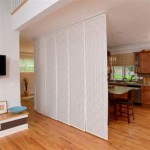Ceiling Design Material Names List
The ceiling is often an overlooked element in interior design, but it plays a crucial role in defining the overall aesthetic and ambiance of a space. Choosing the right ceiling design material can significantly impact the room's visual appeal, acoustic properties, and even its energy efficiency. This article explores a comprehensive list of ceiling design materials, highlighting their unique characteristics, advantages, and potential applications.
Gypsum Board
Gypsum board, commonly known as drywall, is a widely used and versatile ceiling material. It is composed of gypsum plaster sandwiched between two layers of paper. Gypsum board offers several advantages, including affordability, ease of installation, and excellent fire resistance. It can be painted, textured, or covered with various finishes to create diverse looks. However, it is susceptible to moisture damage and may require additional finishing for a smooth and seamless appearance.
Acoustic Ceiling Tiles
Acoustic ceiling tiles are specifically designed to absorb sound and reduce noise levels. They are often used in commercial spaces, classrooms, and recording studios where noise control is essential. These tiles come in various materials, including mineral fiber, fiberglass, and wood, each offering different acoustic properties. They are available in a range of colors and patterns to complement the overall design aesthetic.
Wood Plank Ceiling
Wood plank ceilings add a rustic and warm ambiance to any space. They are commonly used in living rooms, bedrooms, and dining areas. Wood planks can be installed in various patterns, including traditional tongue-and-groove, shiplap, and reclaimed wood. The natural grain and texture of wood provide a unique visual appeal that can create a cozy and inviting atmosphere.
Tin Ceiling Tiles
Tin ceiling tiles are a popular choice for adding a vintage and industrial feel. They are typically made from stamped metal and come in a variety of patterns and finishes. Tin ceilings are known for their durability, resistance to moisture, and ability to reflect light, creating a bright and airy space. They are often used in kitchens, bathrooms, and basements.
Suspended Ceiling
Suspended ceilings, also known as drop ceilings, provide flexibility and accessibility for utilities and wiring. They are typically constructed from metal or wooden grids that hold panels or tiles. Suspended ceilings offer excellent sound absorption and can easily conceal pipes, ductwork, and electrical wiring. They are commonly used in commercial spaces, hospitals, and schools.
Stretch Ceiling
Stretch ceilings, also known as tension ceilings, are a unique and modern option. They are made from a thin, vinyl-based fabric that is stretched tightly over an aluminum frame. Stretch ceilings offer a smooth and seamless finish, are moisture-resistant, and can be customized with various colors, patterns, and lighting effects. They are often used in living rooms, bedrooms, and bathrooms.
Vaulted Ceiling
Vaulted ceilings are an architectural feature that adds height and grandeur to a room. They are typically constructed from wood beams or drywall and create a sense of spaciousness and openness. Vaulted ceilings are often used in living rooms, dining rooms, and entryways.
Coffered Ceiling
Coffered ceilings are characterized by recessed panels that create a symmetrical pattern on the ceiling surface. They are often used in formal spaces, such as dining rooms, libraries, and foyers. Coffered ceilings add a touch of elegance and sophistication to any room.
Beamed Ceiling
Beamed ceilings are a popular design feature that adds a rustic and charming touch to a room. Beams can be made from various materials, including wood, metal, or concrete and are often used in living rooms, bedrooms, and kitchens. They can be exposed or painted to blend in with the surrounding ceiling.
Tray Ceiling
Tray ceilings are recessed ceilings with a central section that is lower than the surrounding area. They create a dramatic focal point and can be used to highlight specific areas within a room. Tray ceilings are often used in living rooms, dining rooms, and bedrooms.
Dome Ceiling
Dome ceilings are a circular or hemispherical architectural feature that adds a touch of grandeur and elegance to a room. They are typically used in entryways, hallways, and living rooms. Dome ceilings can be constructed from various materials, including wood, plaster, or metal.
Other Considerations for Ceiling Design
Beyond the material itself, several other factors contribute to the overall design and functionality of a ceiling. These include:
- Lighting: Ceiling lighting plays a crucial role in setting the mood and ambiance of a room. Different lighting techniques, such as recessed lighting, pendant lights, or chandeliers, can dramatically alter the visual appeal of a ceiling.
- Color: The color of the ceiling can significantly impact the overall feel of a space. Light colors can make a room feel larger and brighter, while darker colors can create a more intimate and cozy atmosphere.
- Texture: Ceiling texture can add visual interest and depth to a space. Textured ceilings can help to conceal imperfections and create a more sophisticated look.
- Insulation: Proper insulation is essential for energy efficiency, especially in areas with extreme temperatures. Insulating the ceiling can help to reduce heating and cooling costs.
By carefully considering the various ceiling design materials and other factors, homeowners and designers can create a ceiling that is both aesthetically pleasing and functional, enhancing the overall beauty and ambiance of any space.

What Are The Types Of Ceiling Materials Fall Ceilings

Metal Profiles For Steel S

Types Of False Ceiling Gypsum Glass Wooden Fiber Materials Nerolac

Plastic Ceiling Design Matt Pvc Baffle 20cm 595m Panel Made In China Com

False Ceiling Contractors From 48 Sq Ft Shaj Interior

False Ceiling Accessories At 30 Piece In Varanasi Id 2850313668555

10 Gypsum Borad Ideas Ceiling Design House

8 Types Of False Ceilings Commonly Used For Home Ultratech Cement

Top 5 False Ceiling Brands In 2025 Civillane

Guide To Ceiling Materials In The Es
Related Posts

